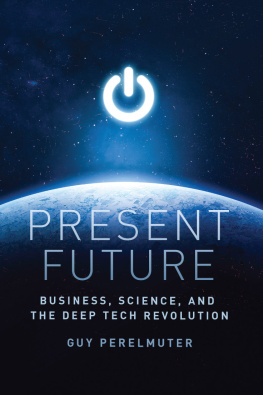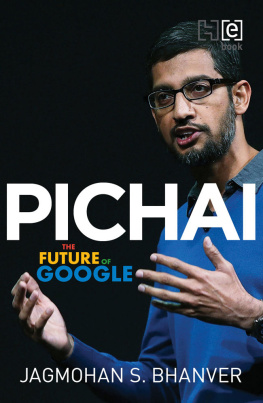Copyright 2018 by George Gilder
All rights reserved. No part of this publication may be reproduced or transmitted in any form or by any means electronic or mechanical, including photocopy, recording, or any information storage and retrieval system now known or to be invented, without permission in writing from the publisher, except by a reviewer who wishes to quote brief passages in connection with a review written for inclusion in a magazine, newspaper, website, or broadcast.
Regnery Gateway is a trademark of Salem Communications Holding Corporation; Regnery is a registered trademark of Salem Communications Holding Corporation
Cataloging-in-Publication data on file with the Library of Congress
ISBN 978-1-62157-576-4
e-book ISBN 978-1-62157-613-6
Published in the United States by
Regnery Gateway, an imprint of
Regnery Publishing
A Division of Salem Media Group
300 New Jersey Ave NW
Washington, DC 20001
www.RegneryGateway.com
Cover design by John Caruso
Books are available in quantity for promotional or premium use. For information on discounts and terms, please visit our website: www.Regnery.com.
To Matt and Louisa Marsh
CONTENTS
P ROLOGUE
Back to the FutureThe Ride
B ack in the early 1990s, when I was running a newsletter company in an old warehouse next to the Housatonic River in western Massachusetts, the Future moved in.
At the same time, the past trudged in, too, in the person of the curmudgeonly special-effects virtuoso Douglas Trumbull. In a world rapidly going digital, Trumbull doggedly stuck to analog techniques. That meant building physical models of everything and putting his many-layered images onto high-resolution film.
Trumbull and my friend Nick Kelley had launched a venture called RideFilm to produce a theme-park ride based on Robert Zemeckiss Back to the Future series of movies. I invested.
It wasnt long before a nearly full-sized plastic and papier-mch Tyrannosaurus Rex was looming over our dusty wooden stairwell, an unofficial mascot of Gilder Publishing. We never quite took him seriously, though he would become a favorite of time-traveling tourists at theme parks in Orlando, Hollywood, and Osaka in a reign lasting some sixteen years.
Trumbull was attempting time-travel himself. Famous for his special effects in the Star Gate rebirth sequence at the end of Stanley Kubricks 1968 film 2001: A Space Odyssey , he had abandoned Hollywood and exiled himself to a small Massachusetts town, where he nursed suspicions of conspiratorial resistance to his analog genius. After his triumph in 2001 , Trumbull provided special effects for several other landmark films, including Steven Spielbergs Close Encounters of the Third Kind (1977) and Ridley Scotts 1982 Blade Runner.
But the world had gone digital, and Trumbull was nearly forgotten. Now in the early 90s he was attempting rebirth as the inventor of an immersive seventy-millimeter, sixty-frames-per-second film process called Showscan and a 3 D ride-film. The result was an experience we now call virtual reality. Trumbulls analog 3 D achieved full immersion without 3 D glasses or VR goggles. Eat your heart out, Silicon Valley.
Michael J. Foxs original escapadethe hit movie of 1985, grossing some $500 millionwas a trivial mind game compared with Trumbulls ride. Universals producer Steven Spielberg speculated that the plot of Back to the Future could inspire a ride-film that would outdo Disneylands Star Tours , created by George Lucas and based on his Star Wars movies. Lucas dismissed the possibility of Universals matching the spectacle of Star Tours .
Wanna bet? Spielberg replied, and he launched the project.
Future and past in play; a Tyrannosaurus rampant; a futuristic DeLorean car; the wild-haired, wild-eyed Doctor Brown; the quaint clock-towered town of Hill Valley, California; the bully Biffyou recall them perhaps. They time-traveled into our three-story brick building, along with the Tyrannosaurus, the shell of a DeLorean, and a makeshift theater, for more than a year of filming.
Trumbull underbid Hollywoods Boss Films to make the four-minute, three-dimensional ride-film, which ended up costing some $40 million. It brought in a multiple of that in revenues over more than a decade and a half and saved the Universal theme park in Orlando from extinction at the hands of Disney World. It was first screened for three of my children and me in the building where we rented our offices. My youngest, Nannina, six at the time, was barred from the ride out of fear she would be unable to distinguish between the harrowing images and reality.
The fact was that none of us could . Belted into the seats of the DeLorean under the dome of an OmniMax screen, senses saturated, we quickly forgot that the car could move only three or four feet in any direction. That was enough to convey the illusion of full jet-propelled motion to our beleaguered brains. From the moment the lights dropped, we were transported. Chasing Biff through time, we zoomed out into the model of Hill Valley, shattering the red Texaco sign, zipping down the winding streets, crashing into the clock tower on the town hall and through it into the Ice Age.
From an eerie frozen vista of convincing three-dimensional tundra, we tumbled down an active volcano and over a time cliff into the Cretaceous period. There we found ourselves attempting to evade the flashing teeth of the Tyrannosaurus rex. We failed, and the DeLorean plunged past the dinosaurs teeth and into its gullet. Mercifully we were vomited out to pursue Biff, bumping into the back of his car at the resonant point of eighty-eight miles per hour, as we had been instructed to do by Doctor Brown. Shazaam , we plunged back into the present. Oh no!are we going to crash through the panoramic glass window of the Orlando launch facility? Yessss ! As thousands of shards fell to the floor, we landed back where we had started and stepped out of the DeLorean onto the dingy warehouse stage, no broken glass anywhere in sight.
The journey took only four minutes, but its virtual-reality intensity dilated time. Our eyes popping, our hearts racing, our lungs swollen, we felt as if we had been in the car for two hours. At least. We had actually undergone a form of time travel.
Like the earth, the Universe is not flat. Meager and deterministic theories that see the universe as shear matter, ruled by physics and chemistry alone, leave no room for human consciousness and creativity. Just as a 3 D ride-film transcends a 2 D movie, other dimensions of experience are transformative and artistically real. As Harvard
From our minds open potential metaverses, infinite dimensions of imaginative realitycounter-factuals, analogies, interpretive emotions, flights of thought and creativity. The novelist Neal Stephenson, who coined the term metaverse, and Jaron Lanier, who pioneered virtual reality, were right to explore them and value them. Without dimensions beyond the flat universe, our lives and visions wane and wither.
This analogy of the flat universe had come to me after reading C. S. Lewiss essay Transposition, which posed the question: If you lived in a two-dimensional landscape painting, how would you respond to someone earnestly telling you that the 2 D image was just the faintest reflection of a real 3 D world? Comfortable in the cave of your 2 D mind, you had 2 D theories that explained all you experienced in flatlandthe pigments of paint, the parallax relationships of near and far objects, the angles and edges. The math all jibed. Three dimensions? you might ask. I have no need for that hypothesis.
Around the time of Back to the Future: The Ride in the early 1990s, I was prophesying the end of television and the rise of networked computers.
Rupert Murdoch was one of the first people who appreciated this message, flying me to Hayman Island, Australia, to regale his executives in Newscorp and Twentieth Century Fox with visions of a transformation of media for the twenty-first century. At the same time, the Hollywood super-agent Ari Emanuel proclaimed Life after Television his guide to the digital future. I later learned that long before the iPhone, Steve Jobs read the book and passed it out to colleagues.
Next page






